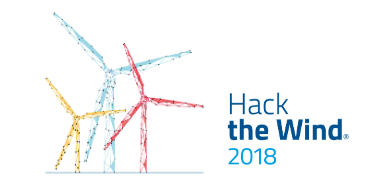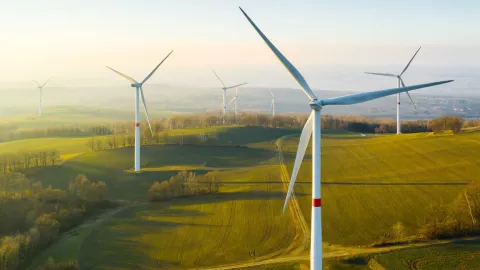Did you submit your thesis or research paper, or perhaps developed a new algorithm?
Let us know what you have accomplished.
Discover some examples of what other users have achieved with our data

Hack the Wind 2018
From dataset: Wind Farm 1 - Failures 2016
Hack the Wind® is dedicated to moving the wind energy industry forward by inviting designers, developers, data scientists and analysts, and wind energy experts to work with some of the biggest names in the industry to create solutions for the proposed challenges.
EDP Renewables Challenge: Time is money and anticipating failures in wind turbines reduces the maintenance and production due to unavailability - paving the way for lower, levelized costs of clean energy. How many failures can you anticipate? The team who detects the most early stage failures will enable the highest cost savings. If a team can do this as well as visualize the data presented to them, they will be named the winner of the challenge.

Falkonry
From dataset: Sunlab Faro - Meteo 2016
EDP uses OSIsoft’s PI System as part of its data infrastructure to collect and manage time series data in its operations. EDP Inovação applied the Falkonry LRS machine learning system to automatically identify and classify underperformance of solar panels in Sunlab. This insight enabled EDP to improve operations by remotely identifying unexpected patterns on the PV output based on the irradiation that it is actually receiving. Falkonry is a leading provider of operational machine learning for Global 2000 industrial companies. Falkonry’s ready-to-use system empowers practitioners to accelerate the digital transformation of industrial operations by delivering new analytical insights from patterns hidden inside operational data.

Angular distribution of solar radiation
From dataset: Sunlab Faro - Meteo 2015
The angular distribution of solar radiation is conditioned by two components: the direct radiation, whose mathematical description is well known, and the diffuse radiation, which, due to its nature, is more difficult to model. The goal of the present dissertation is to assess the Perez model in Portugal, for surfaces with different tilt angles. For the effect, direct and diffuse solar radiation data as well as photovoltaic production data obtained in modules with different tilt angles in two locations were analysed. The experimental data were collected in Seia and Faro, at the SunLabs of EDP Innovation. In order to assess the Perez model, it was also necessary to implement an empirical model for the conversion of solar radiation into photovoltaic generation. The overall results obtained for both locations suggest that the Perez model does not insert significant errors in the estimation of the photovoltaic production in tilted surfaces.

